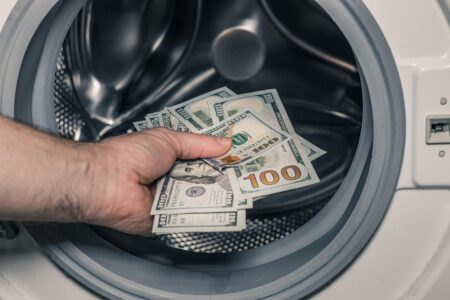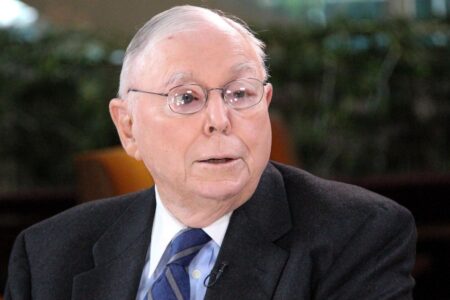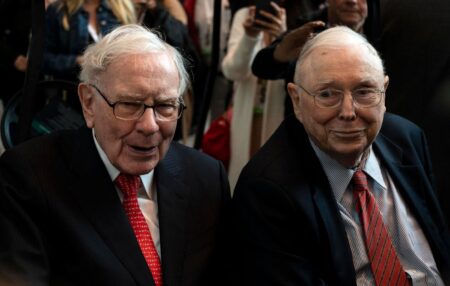While banks and stocks generally had a week of robust gains, the rally was trimmed on Friday when negotiations over raising the debt ceiling broke down. The U.S. banking system has been under pressure since the sudden collapse and seizure of Silicon Valley Bank (SIVBQ) by the FDIC on March 10. The challenge of analyzing bank safety is that a severe loss of confidence can actually cause an otherwise functioning financial institution to come under duress. Weekly data released by the Federal Reserve indicate that stresses remain in the banking system, but we seem to have removed the systemic threat. Aside from the market pricing data and government money market mutual funds asset flows, the bank data come from the Federal Reserve’s weekly reports, released Thursday and Friday.
Despite the debt ceiling worries, the bank indexes outperformed the S&P 500 by a wide margin last week for the first time since the banking crisis began. The proximate cause of the sharp rally in banks, particularly the regional banks, was an announcement by Western Alliance Bancorporation (WAL) that deposits had risen by over $2 billion since April. In addition, Western Alliance noted that extra liquidity would be provided by the “imminent” sale of about $3 billion in loans. Western Alliance’s stock price had been more than cut in half before a breathtaking rally of almost 25% last week.
The KBW Regional Bank index is down over 28% year-to-date. As measured by the KBW Bank index, larger bank stocks declined almost 24% year-to-date.
Credit default swap (CDS) prices are less well-known but available in real-time. In simple terms, CDS functions as an insurance policy that investors can purchase that pays off in the event of a borrower’s default. A higher price of a CDS reflects a more significant probability of default of the borrower. CDS prices for four of the U.S.’s global systemically important banks (G-SIBs) improved last week and are near their lowest levels since this crisis began. Generally, the view is that the mega banks are safe and might benefit from the deposit flight from and worries about the smaller banks.
A straightforward way to measure the stress in the U.S. banking system is the magnitude of bank support provided by the Federal Reserve via various facilities. The most common is the discount window, which banks generally avoid, but the facility can provide emergency liquidity. In addition, following the collapse of Silicon Valley Bank, the Federal Reserve announced a new facility to help banks meet withdrawal requests from depositors and restore confidence. The Bank Term Funding Program (BTFP) allows banks to borrow up the face value of any government bonds held in the bank’s portfolio at a very reasonable rate. The Paycheck Protection Program (PPP) facility was created in 2020 to provide support during the pandemic. Other credit is the support of the bridge banks, operated by the Federal Deposit Insurance Corporation (FDIC) until they can be sold or liquidated.
With the seizure of Silicon Valley Bank and Signature Bank
SBNY
Unfortunately, the banking system saw net deposit outflows across large and small banks. Notably, the 25 largest banks, which include many midsize regional banks, have lost about 1.8% of their deposit base since the failure of Silicon Valley Bank, while the smaller banks lost 4.6%.
Government money market funds saw inflows again last week at a similar pace to the previous week. Cash has been flowing into government money market funds, which confirmed the pressure on deposits to leave the banking system. Notably, the pace of inflows into government money market funds has moderated significantly since the apex of the banking crisis. This movement, also known as “cash sorting,” reflects savers reaching for higher yields while avoiding the credit risk at banks. Cash sorting started before the crisis began but seems likely to continue to some degree while short-term U.S. Treasury yields exceed the interest rates banks pay depositors.
Banks have continued to make loans despite the crisis, but total bank lending declined last week, driven primarily by a decline in business (C&I) loans from the large banks. Loan growth should be expected to slow if banks are forced to hoard extra liquidity to bolster their defenses against possible additional deposit flight and increased loan losses.
The evidence remains inconclusive that any significant loan rationing from the banks is occurring yet, even if it seems a likely outcome of the crisis. So far, all that can be pointed to is a moderation in the pace of increase in bank loans year-over-year, though the deceleration of commercial real estate (CRE) loans is notable. Most commercial real estate loans are provided by smaller banks, which are the ones most threatened by this banking crisis, so that remains an area of concern.
The negotiations to raise the debt ceiling seemed to progress last week, but they broke down on Friday. President Biden’s absence from Washington to attend the G7 Summit in Japan has likely complicated matters, and negotiations are not expected to begin again until he returns today (Sunday). The good news is that both sides know time is running out, as the U.S. Treasury’s general account is running low. Since this is a negotiation with each side trying to use its political leverage, these things are usually dragged out until the last minute.
The principal thing to remember is that any debt ceiling crisis is a manufactured political crisis rather than a lack of ability to pay the U.S. government’s debt. This debt ceiling argument is a political fight in which each side thinks it can extract something from the other. While a possible default on U.S. debt will be discussed in the news if an agreement is not reached as extraordinary measures are exhausted, a default is virtually certain not to happen. Existing law does not stop the U.S. Treasury from prioritizing payments, and according to Strategas, the U.S. has more than enough cash flow to make interest payments. Investors should be prepared for stock and bond volatility, but any significant declines driven by the conflict will likely be an opportunity for long-term investors. There is more background about the debt ceiling, solutions, and past market behavior surrounding the negotiations available here.
Read the full article here













